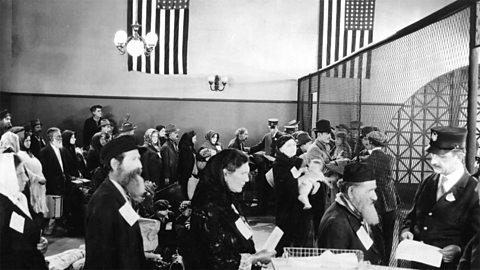Unequal distribution of wealth
Whilst the American economy had undoubtedly grown during the 1920s, there was a huge gap between rich and poor.
Additionally, much of the wealth was concentrated at the top of society.
A third of all income was earned by just 5 per cent of people.
At the same time, more than 60 per cent of Americans lived just below the poverty line.
All of this meant that there was an unequal distribution of wealth.
The wages of many workers only rose slowly and the weakness of the trade unions meant that they could not campaign effectively for better pay and conditions.
In the construction industry, there was only a 4 per cent increase in pay during the decade.
Whist many Americans had taken part in the consumer boom, they had done so using cheap credit.
This left many of them with debts.
60 per cent of cars and 80 per cent of radios were bought on creditWhen a good is received but not paid for until later..
Groups that didnÔÇÖt prosper
Whilst the overall economy had grown, the unequal distribution of wealth had hit specific groups.
Black Americans who had moved to the Northern states were often said to be the ÔÇślast to be hired and the first to be firedÔÇÖ.
They found it difficult to get skilled jobs and most remained in cheap manual labourWhen people do all the work by hand..
The situation in the Southern states was even worse because of the impact of segregationThe enforced separation of different racial or ethnic groups by providing separate public services and facilities, such as schools, libraries and waiting rooms. .
Question
What is overproduction and underconsumption?
The success of many businesses relied on a simple formula known as supply and demand.
When factories produce goods, they are only able to make money if they can sell them to customers.
The demand must be there to meet the level of supply.
If they are making far too many of their goods it is called overproduction.
This means, there is too much supply.
When customers are not buying those goods, it is called underconsumption.
This means, there is not enough demand.
If the two happen at the same time, it means that companies are paying to make goods but not getting money back because they canÔÇÖt sell them.
Overproduction and underconsumption
Overproduction and underconsumption was a key problem in the American economy by the end of the 1920s.
When this had happened in the past, American companies could sell their goods overseas.
However, European countries had put tariffA tax or charge placed on imported or exported goods and services. on American goods in retaliation for protectionismProtectionism is the process of protecting domestic industries by adding tariffs or taxes onto imports. which made it incredibly difficult to exportTo sell goods to other countries and send them out of the country to them. The goods are known as exports. goods.
This left the companies with only the American market to sell in.
However, if an American family bought a car once only every number of years, it was difficult to sell them another.
This meant there were too many products on the market and so prices dropped, which meant less profits for the companies.
In turn, their share prices, an indication of the health of a business, dropped.
Many ordinary Americans had their savings invested in these shares, so they had even less money to buy goods.
It was a vicious circleA repeating chain of events in which one problem causes another problem which then makes the first problem worse..
Problems in agriculture
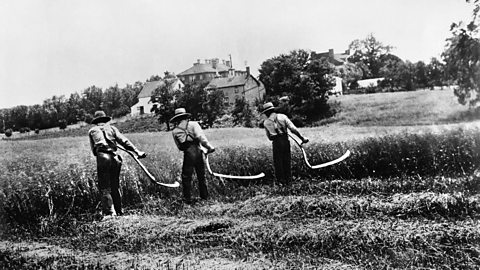
Farmers had prospered during World War One, but were among those who suffered most during the boom.
The income of a farmer was around $275 per year and the national average was $750. By 1928, half of farmers were living in poverty.
This was due to several factors:
- They were producing more crops than needed, so prices fell.
- They could not sell their products overseas because of tariffA tax or charge placed on imported or exported goods and services. and a surplusWhen there is more of something than is needed. of food in other countries.
- ProhibitionA name given to a period in US history between 1920-1933 when alcohol was banned. led to a 90 per cent fall in demand for barley which had been used to make alcohol.
- Changing tastes in food in America meant there was a 25 per cent decline in demand for wheat. There was also competition from Canadian wheat growers.
Overproduction and underconsumption of agricultural products meant that farm income fell from $22 billion in 1919 to $13 billion in 1929. Three million rural families earned less than the national average.
Farmers borrowed money from the banks to be able to survive.
They got into crippling debts which reached $2 billion in 1929 and many had to sell up.
Roughly 600,000 farmers lost their farms in 1924 alone.
Many became travelling vagrantA homeless, unemployed person who wanders from place to place. - known as hobos - who wandered around America looking for any type of work.
Others tried to survive by using more mechanisation and expanding the acreage they farmed, but this only made the overproduction worse.
Sharecroppers
- Many black American farm labourers were sharecroppers.
- Sharecroppers rented land owned by white landlords and had to pay for this from a ÔÇśshareÔÇÖ of their crop.
- When the price of crops fell or the boll weevilA beetle which eats the buds of cotton plants, damaging the final cotton produce. devastated cotton crops, they were either sacked or did not receive the share of the crop to which they were entitled.
- The problems in agriculture left the sharecroppers destitute.
Decline of traditional industries
The traditional industries (coalmining, textiles, shipbuilding, etc.) declined and many people were made unemployed.
Those workers who managed to keep their jobs received very low wages.
The coal industry was producing too much coal and not enough people and countries wanted to buy it.
Oil was becoming a more popular source of energy for industry.
By 1929, there were a third less coal miners than there had been 20 years previously, as mine owners increasingly turned to mechanisation.
Shipbuilding was another major industry that made thousands redundantIf an employee is made redundant, it means the role they had in the business no longer exists. This means they will have to find an alternative role within the business or find employment elsewhere. due to a reduction in the demand for new ships.
The textile industryBusinesses that turn raw materials into sheets of fabric and clothes. began to use new syntheticA synthetic substance is one made by chemical reactions rather than by nature. fibres.
rayonA soft artificial fabric which resembles silk. became a very popular substitute for cotton, but fewer workers were needed to produce rayon than cotton.
Those who kept their jobs earned an average of only $9 per week in 1926.
The policies of the American presidents
Whilst the policies of the Republican presidents had helped contribute to the boom, they also caused problems in the long term.
Protectionism: this had introduced tariffA tax or charge placed on imported or exported goods and services. on foreign products to keep American-made goods cheaper for consumers. However, European countries retaliated by placing tariffs on American products. This meant that when they overproduced, they could not export their surplusWhen there is more of something than is needed..
Laissez-faire: The US Congress tried a number of times to pass laws to help the farmers, but this action was vetoed by President Coolidge who thought that government should not interfere in the economy and refused to budge from his laissez-faireA government policy of leaving something alone to sort itself out. 'Laissez- faire' is French for 'leave alone'. policy.
Weakening unions: Trade unions found it difficult to campaign for better wages. This meant that many ordinary Americans could not keep up with rising prices.
Lack of regulation of banks and finance: There were very few rules for banks and this enabled them to lend money recklessly to businesses that could not pay the loans back.
Winners and losers
People who benefited from the boom:
- Owners of consumer goodsProducts that individuals purchase for their own use or benefit. factories.
- assembly lineA series of workers and machines in a factory by which a succession of similar items is progressively assembled. workers.
- White people in the cities.
- speculatorA person who invest in stocks, etc. in the hope of making a profit. on the stock marketA centralised market where business shares are traded. (until 1929).
- Builders.
- Middle class women.
People who did not benefit from the boom:
- Workers in traditional industries (for example, coal miners, textile industryBusinesses that turn raw materials into sheets of fabric and clothes., ship builders).
- Farmers (with the exception of fruit growers in California and large grain farmers in the Mid-West).
- Black Americans (especially sharecroppersFarmers who had to pay to use land by giving a proportion of their produce to the owner.).
- immigrantA person who lives in a country they were not born in..
Quiz: Find the winners and losers
Test your knowledge
More on Life in the United States of America, 1920-33
Find out more by working through a topic
- count8 of 9
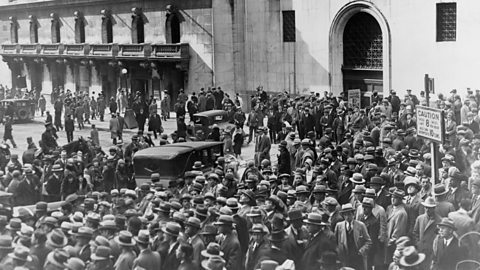
- count9 of 9
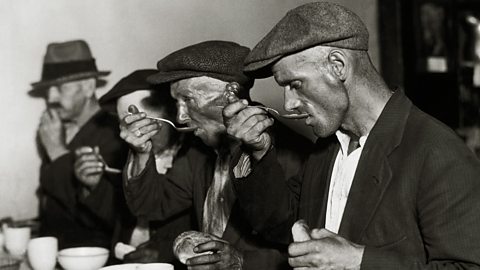
- count1 of 9
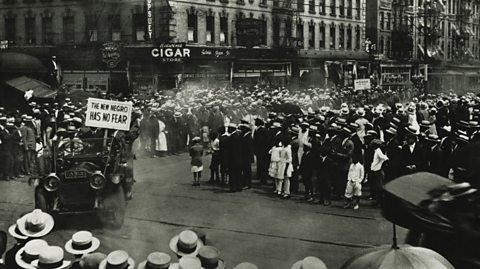
- count2 of 9
